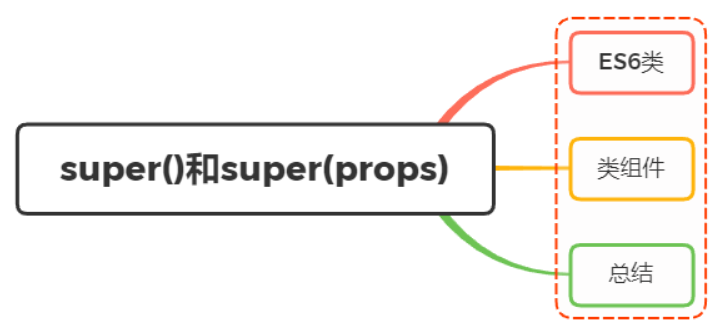面试官:super()和super(props)有什么区别?
huihuiha opened this issue · 5 comments
一、ES6类
在ES6中,通过extends关键字实现类的继承,方式如下:
class sup {
constructor(name) {
this.name = name
}
printName() {
console.log(this.name)
}
}
class sub extends sup{
constructor(name,age) {
super(name) // super代表的事父类的构造函数
this.age = age
}
printAge() {
console.log(this.age)
}
}
let jack = new sub('jack',20)
jack.printName() //输出 : jack
jack.printAge() //输出 : 20在上面的例子中,可以看到通过super关键字实现调用父类,super代替的是父类的构建函数,使用super(name)相当于调用sup.prototype.constructor.call(this,name)
报错的原因是 子类是没有自己的this对象的,它只能继承父类的this对象,然后对其进行加工
而super()就是将父类中的this对象继承给子类的,没有super() 子类就得不到this对象
如果先调用this,再初始化super(),同样是禁止的行为
class sub extends sup{
constructor(name,age) {
this.age = age
super(name) // super代表的事父类的构造函数
}
}所以在子类constructor中,必须先代用super才能引用this
二、类组件
在React中,类组件是基于es6的规范实现的,继承React.Component,因此如果用到constructor就必须写super()才初始化this
这时候,在调用super()的时候,我们一般都需要传入props作为参数,如果不传进去,React内部也会将其定义在组件实例中
// React 内部
const instance = new YourComponent(props);
instance.props = props;所以无论有没有constructor,在render中this.props都是可以使用的,这是React自动附带的,是可以不写的:
class HelloMessage extends React.Component{
render (){
return (
<div>nice to meet you! {this.props.name}</div>
);
}
}但是也不建议使用super()代替super(props)
因为在React会在类组件构造函数生成实例后再给this.props赋值,所以在不传递props在super的情况下,调用this.props为undefined,如下情况:
class Button extends React.Component {
constructor(props) {
super(); // 没传入 props
console.log(props); // {}
console.log(this.props); // undefined
// ...
}而传入props的则都能正常访问,确保了 this.props 在构造函数执行完毕之前已被赋值,更符合逻辑,如下:
class Button extends React.Component {
constructor(props) {
super(props); // 没传入 props
console.log(props); // {}
console.log(this.props); // {}
// ...
}三、总结
在React中,类组件基于ES6,所以在constructor中必须使用super
在调用super过程,无论是否传入props,React内部都会将porps赋值给组件实例porps属性中
如果只调用了super(),那么this.props在super()和构造函数结束之间仍是undefined
参考文献
_aSDasdf_****
12
-
2
-
2
说的有点问题,
不管调不调用super()this还是可以指向当前对象,只是调用super,可以继承父类属性,之所以报错是因为预防调试出错。
父组件的属性作为他原型对象上的属性,当自己属性上不存在时,才会去原型上找,实际上this不管super不super都是指向当前对象

